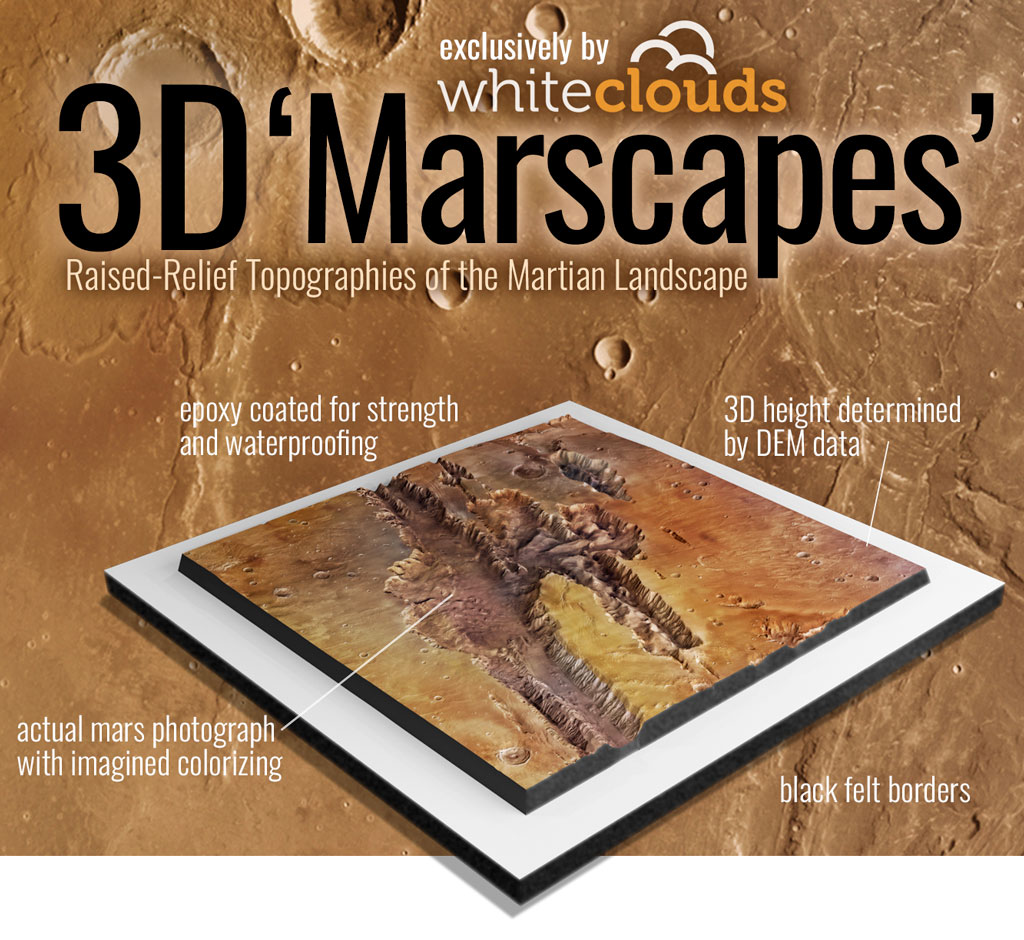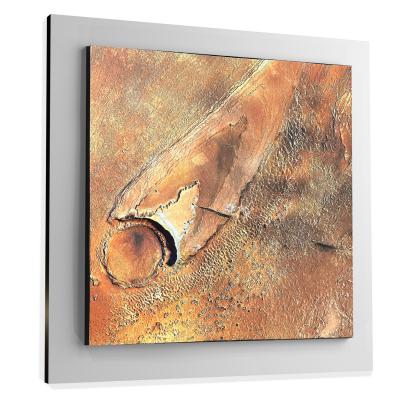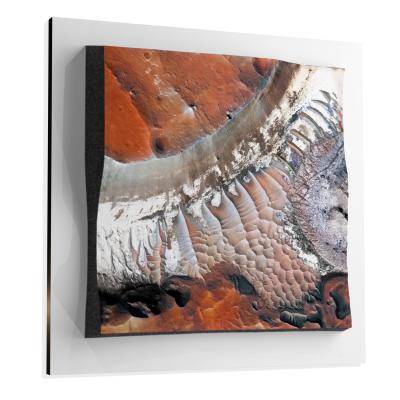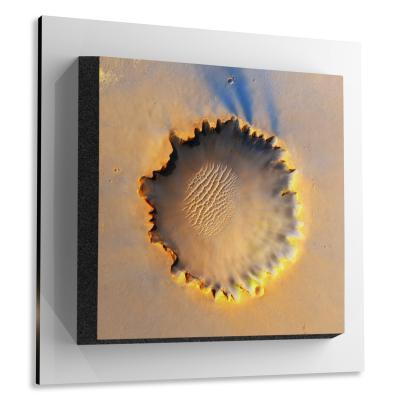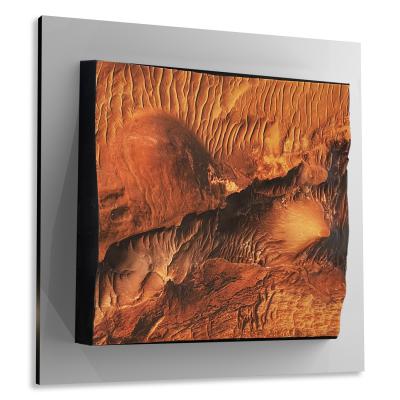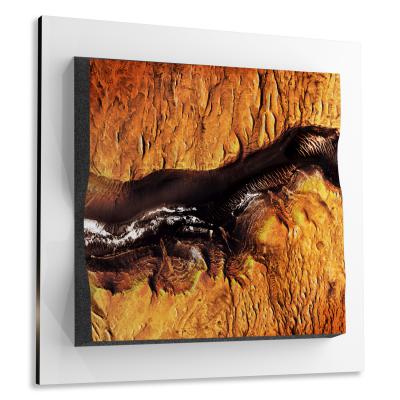Uzboi Vallis
Uzboi Vallis
We Build Custom 8K Mars Canvas Prints of Uzboi Vallis
Did you know we make
custom
8K Mars Canvas Prints

and
3D Marscapes

Uzboi Vallis
Uzboi Vallis has captured the interest of planetary scientists, astrobiologists, and geologists alike due to its complex geological features and the hints it offers about Mars’ climatic and hydrological history. This channel system stands as one of the most intriguing and studied features on the Martian surface, offering a wealth of information about the processes that have shaped the Red Planet over billions of years.
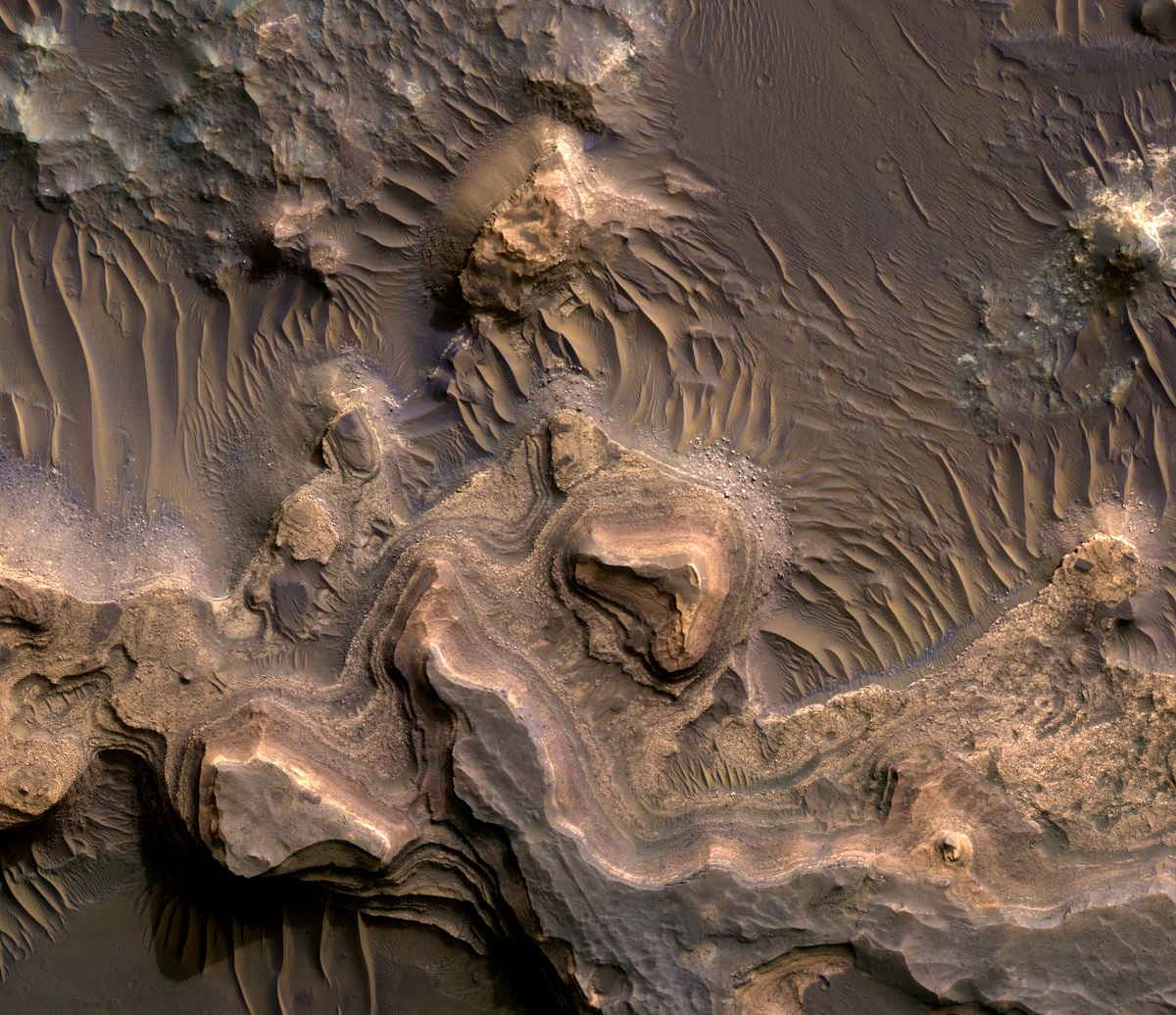 Layered Deposits in Uzboi Vallis
Layered Deposits in Uzboi Vallis
Geographical Location
Uzboi Vallis is a striking geological feature that stretches its sinuous form across the southern hemisphere of Mars. Positioned within the Margaritifer Sinus quadrangle, it sprawls for an astonishing 270 kilometers and reaches widths that vary between narrow bottleneck points and expansive stretches of up to 60 kilometers at its widest. The geographical coordinates for this Martian valley are particularly significant, as they hover around a latitude range of 0°S to 10°S and a longitude range of 30°W to 40°W. Uniquely situated, Uzboi Vallis serves as a geological nexus between the massive Argyre Planitia impact basin to the south and the complex, elevated terrain of the Margaritifer Terra region, peppered with chaotic blocks and towering mesas to the north. This remarkable juxtaposition of terrains endows Uzboi Vallis with an invaluable role as a natural laboratory for comprehensively studying Martian sedimentology, hydrology, and tectonics. For researchers and scientists, the Vallis stands as a cornerstone for Martian geological studies and has received special focus in multiple interplanetary missions.
Advertisement
Sample Marscapes
Geological Composition
The geological tapestry of Uzboi Vallis is fascinatingly intricate. Predominantly consisting of basaltic rocks formed from ancient Martian volcanic activity, the valley also flaunts a varied set of sedimentary deposits on its floor. These include complex conglomerates, porous sandstones, and fine-grained siltstones that present a compelling case for the existence of past fluvial activities. High-definition spectroscopic data further enrich our understanding of the region’s geological profile by revealing the presence of sulfates, chlorides, and other evaporite deposits. These salt accumulations hint at periods of water evaporation and subsequent chemical interactions between the water and surrounding rocks. Moreover, the walls of the Vallis manifest a multilayered sedimentary record, illustrating the ebb and flow of different environmental conditions that have shaped this remarkable Martian feature over eons.
Significant Discoveries
Evidence of Fluvial Activity
Unveiling Uzboi Vallis’ past is akin to reading an epic tale of planetary transformation. One of its most startling chapters is the abundance of morphological evidence that points toward the existence of ancient river systems. Characteristics like meandering patterns, braided channels, and well-stratified sedimentary layering are telltale signs that water once actively sculpted this landscape.
Possible Glacial Activity
Adding yet another layer to its environmental narrative, Uzboi Vallis also showcases features such as lineated valley fill and lobate debris aprons—morphological clues which hint that glacial activities may have played a role in shaping this complex valley system at some point in Martian history.
Lake Formation
Further compounding its geological allure, several observations have led scientists to hypothesize that Uzboi Vallis might have once been the site of a lake. Features resembling dam-like structures and sedimentary deposits within the valley appear to support the theory that this Martian channel had capabilities for the temporary storage and natural damming of water.
Scientific Missions
The scientific exploration of Uzboi Vallis has been robust, involving a suite of space missions that have deepened our understanding of this Martian marvel. NASA’s Mars Reconnaissance Orbiter (MRO) and the earlier Mars Global Surveyor missions have been instrumental in providing a wealth of high-resolution imagery, topographical maps, and altimetry data. Not to be outdone, the European Space Agency’s Mars Express spacecraft has supplemented our knowledge with additional radar scans and high-definition spectroscopic analyses. Although no lander or rover missions have been explicitly targeted at Uzboi Vallis yet, its diverse geological and climatic features make it a leading candidate for future exploratory missions designed to probe the depths of Martian history.
Geomorphological Features
Geomorphologically, Uzboi Vallis is an enigmatic blend of complex features shaped by multiple erosional forces. Along the length of this sinuous channel, one finds an array of erosional marks, such as gullies, alcoves, and erosional notches, known as knickpoints, that strongly indicate a past influenced by both water flow and possibly glacial activities. The periphery of the Vallis is framed by irregular, uneven terrains and chaotic blocks that bespeak a storied history of tectonic movements and land subsidence events. Further adding to its multifaceted profile, select portions of the Vallis are accentuated by the presence of alluvial fans and deltaic deposits, a confirmation to its hydrologically active past and the sedimentary processes that have added layers of complexity to its already intricate geomorphological framework.
Uzboi Vallis stands as a Martian feature of immense scientific interest, offering a rich tapestry of geological and climatic clues. Its unique geographical location and complex geological makeup make it an excellent candidate for future research missions aimed at understanding Mars’ past and present. The significant discoveries related to Uzboi Vallis, especially those indicating past water activities, position it as a key feature in understanding Mars’ hydrological history. As more scientific missions focus on this captivating Vallis, it is likely to continue illuminating our understanding of Martian geology and climate, and perhaps even offer insights into the planet’s potential to host life, either in the past or future.
Check out our 3D Mars Learning Center for more information on Mars and Uzboi Vallis. You can also learn more at: NASA Mars Exploration.
More About Mars
Contact us today to learn more about our 3D services and how we can help you achieve your goals.
